By Eric Niderost
Kapitanleutnant Volker Simmermacher gazed intently through his attack periscope, sizing up the target that so far seemed oblivious to his presence. Yes, the silhouette was unmistakable—an American “liberty” cargo ship. Simmermacher was skipper of the U-107, and the German submarine was just returning from a minelaying expedition off the Georgia coast. Now, about 110 miles from Savannah, here was a chance to score a sinking. The U-107 was a Type IXB submarine, a boat that normally carried 22 torpedoes, and Simmermacher wasn’t about to pass up such an excellent opportunity—or so it seemed.
But there was a complication: the targeted ship, S.S. Albert Gallatin, was not alone. A U.S. Navy airship hovered in the skies nearby, a guardian angel to the vulnerable freighter. The Kapitaneutnant had actually spotted the airship before the Albert Gallatin, and now he had to decide what to do. These airships—Luftschiffs to the Germans—were becoming a more common sight ever since their first appearance in early 1942. It was now July 1943, and the conflict which later historians called the Battle of the Atlantic was at its height.
Simmermacher decided to throw caution to the wind and attack the Albert Gallatin immediately, trusting he could escape before that Amerikanisches Luftshiff—American airship—could make an effective response. The Kapitanleutnant decided on a fan shot, two torpedoes fired simultaneously, following up with a third for good measure. After the necessary information was gathered—target range, course, speed—it was time to give the final commands.
“Rohr eins—los!” Simmermacher ordered, followed by a “Rohr zwei—los!” in quick succession. After tubes one and two were fired, a torpedo from tube three was also launched on Simmermacher’s express command. Were the calculations correct? And more importantly, what would be the airship’s response? Only time would tell.
In a sense, this duel between airship and submarine had its roots in the years immediately following World War I. The 1920s and 1930s were the golden age of the airship, an era of triumph that was also marred by occasional tragedy. But in those years, it was the so-called dirigible that took center stage in both military planning and public affection. Sometimes called a “rigid,” the dirigible had an internal structure, a “skeleton,” that gave it form. This skeleton was made of duralumin, an aluminum alloy that was relatively light yet strong.
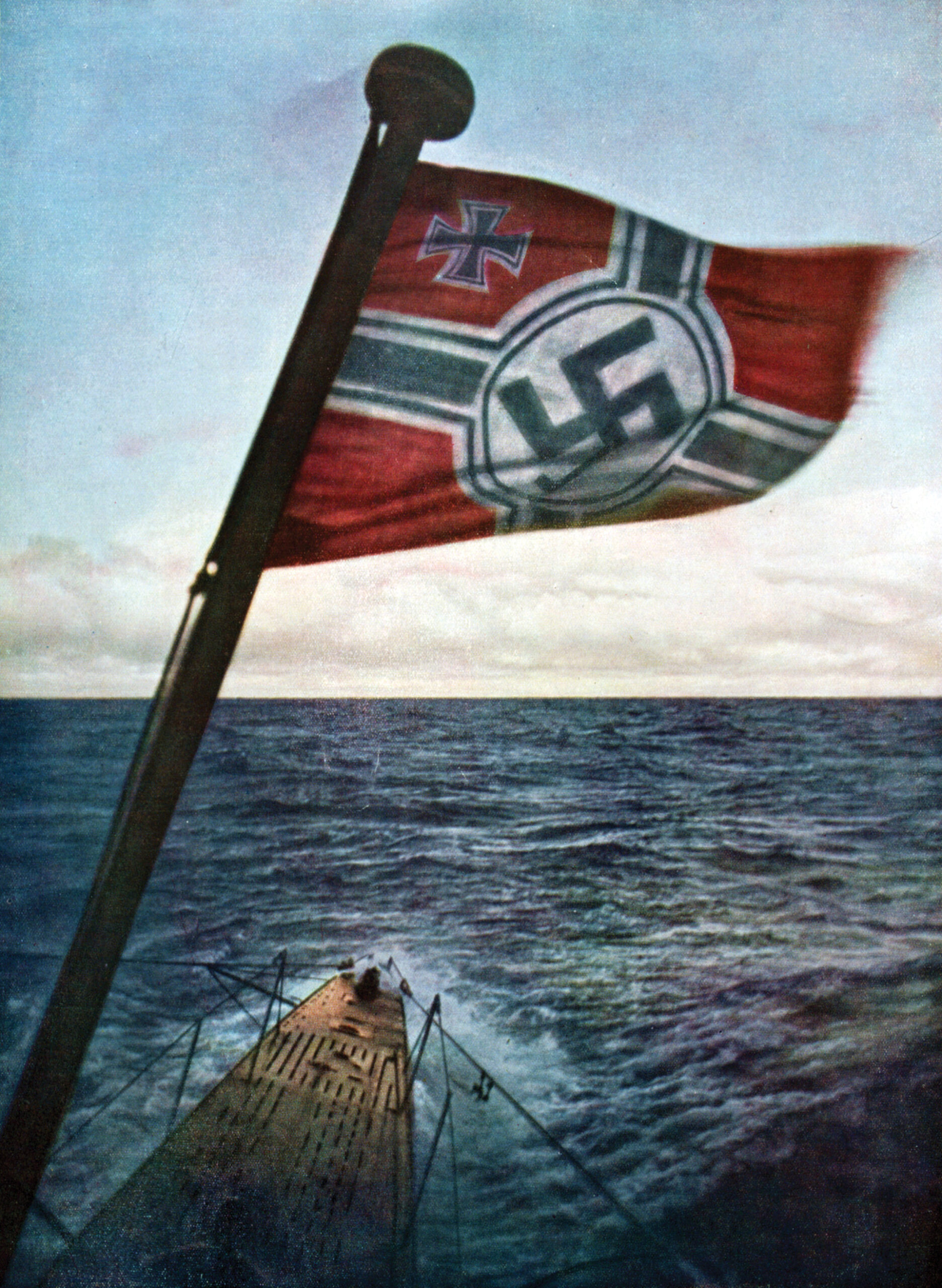
Germany’s zeppelins were the first, and probably the most famous, of the dirigibles. They were used as bombers in World War I, and after initial successes proved too vulnerable for continued use in that role. However, Germany’s wartime experiences gave the country a head start in the use of airships as commercial passenger vessels. The Graf Zeppelin, LZ 27, became world famous for such feats as circling the globe in 1929.
But the United States Navy hoped there still might be military applications. Arrangements were made for the Zeppelin company to build a zeppelin which upon completion was brought to the United States and dubbed Los Angeles. The Los Angeles was generally deemed a remarkable success, and many later airship advocates, like future Admiral Charles Rosendahl, gained experience aboard the dirigible in the 1920s.
By the 1930s, a new proposal was being circulated in naval planning circles: why not have dirigibles as airborne aircraft carriers? They could be potentially invaluable as scouts, especially in the far reaches of the broad Pacific. Two large rigid dirigibles were built, the Akron and Macon, but both met untimely ends in tragic crashes. Those losses, plus the famous destruction of the German airship Hindenburg in 1937, seemed to close the door on future airship development.
The rigid dirigibles were evolutionary dead ends, at least for the 1930s. They were things of awesome beauty, silvery leviathans that reached enormous sizes; the Macon alone stretched some 785 feet from nose to tail. But while the dirigible was grabbing the headlines, its “cousin” the nonrigid airship was slowly being developed. The nonrigid didn’t have an internal structure metal “skeleton.” Instead, its size was maintained by the internal pressure of the lifting gas.
The nonrigid airship was nothing new; it had been used in World War I. In fact, its other name, “blimp,” comes from a British term. Supposedly the name derives from the sound the outer skin makes if you poke an inflated portion. But the United States had a unique advantage that actually encouraged the development of blimps: helium.
Traditionally the lifting gas universally used for airships was hydrogen. Virtually all countries used it, in part because it had great lifting power and was easy to manufacture. But unfortunately, hydrogen was revealed to be highly flammable and ultimately very dangerous. Helium was a much safer alternative, though its lifting power was somewhat less. But that was a minor consideration, considering how explosive the other gas was.
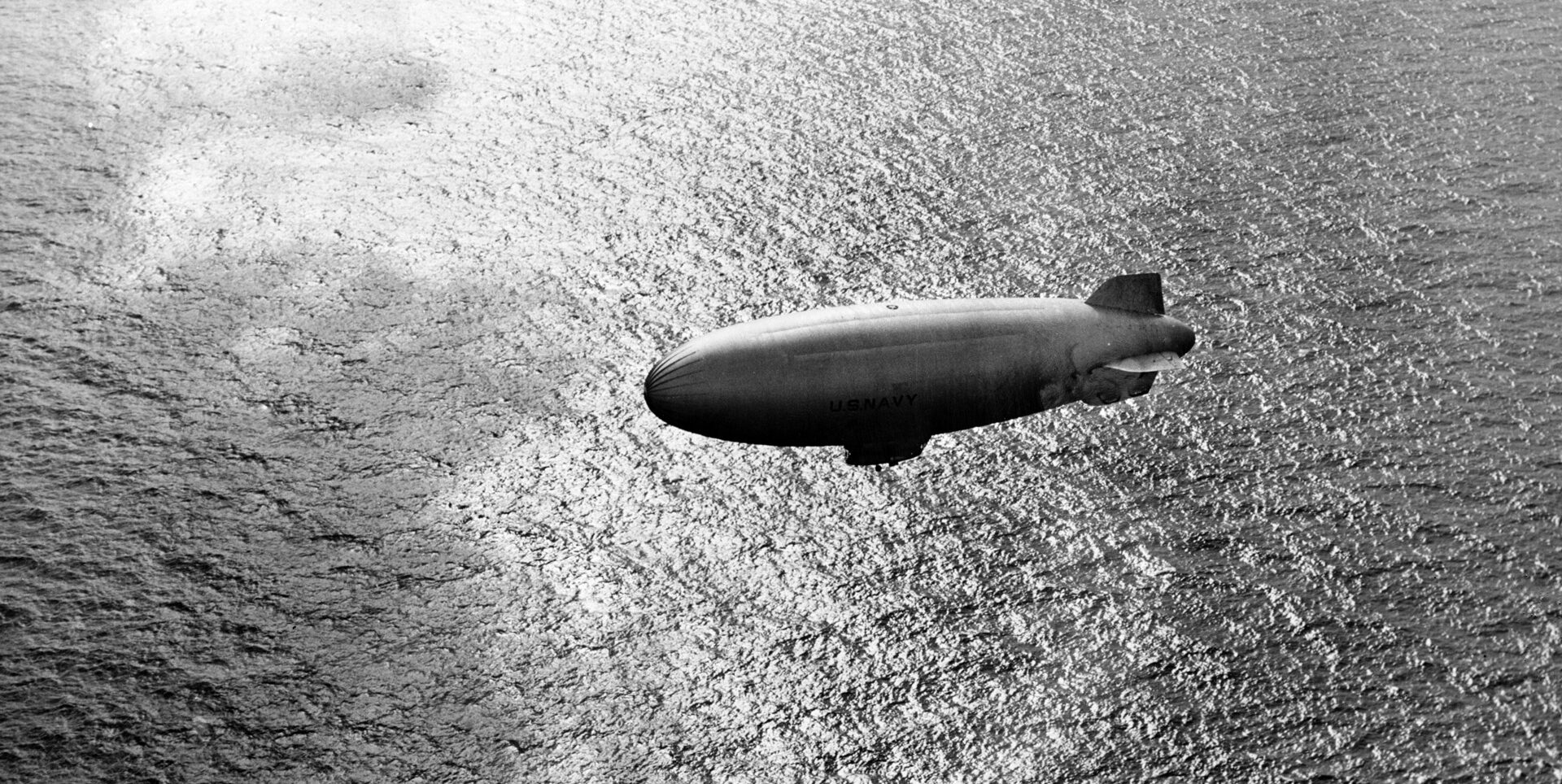
Helium was found in commercial quantities only after World War I. But the biggest surprise was a fortunate accident of geography. The United States had the largest-known helium reserve in the world. That meant that any future German airship program would have to rely on foreign countries or use more dangerous lifting agents.
After France fell to the Nazis, Congress started to awaken from its isolationist “coma.” The 76th Congress passed Public Law 635 that authorized the building of 10,000 airplanes. The vast majority ordered were heavier than air, fixed-wing aircraft, but there was also a provision for 48 non-rigid airships as well. Slowly, almost painfully, the U.S Navy was also coming around to the idea of non-rigid airships/blimps as ideal vehicles for coastal patrol, escort duties, and even search and rescue.
Blimps could hover or travel slowly and methodically at low altitudes, all the while scanning and searching for trouble or for personnel that needed rescue. They had great endurance and could stay airborne much longer than conventional heavier-than-air fixed-wing aircraft. Blimps were not expected to engage subs as a primary mission but could carry a respectable payload that included machine guns and depth charges.
As war clouds gathered in 1941, the ZNP-K airship type was emerging as the future backbone of the service. The letters meant “Lighter than Air, Nonrigid, Patrol, K-class.” Yet, in spite of Congressional authorization, construction of the airships was slow. Goodyear Tire and Rubber Company was given the contract to build the airships, a natural choice because years earlier they had partnered with the Zeppelin company and gained enough experience to build the ill-fated Akron and Macon.
Nevertheless, Goodyear and the U.S. Navy were caught flat-footed by the Japanese surprise attack on Pearl Harbor. On December 7, 1941, the U.S. Navy only had 10 operational airships in service, and of those 10, only 4 were K-types. The rest were a ragtag collection of diverse types, including TC-types that were “hand me downs” from the Army, which had abandoned their airship program in 1937.
As if that weren’t bad enough, the Germans launched a U-boat offensive all along the eastern seaboard of the United States, an effort Admiral Karl Donitz labeled Operation Paukenschlag (Operation Drumbeat). During seven to eight months of 1942, German U-boats had a field day, sinking ships with near impunity. Depending on what source you consult, Allied shipping losses off the American coast numbered over 600. Some ships were torpedoed in broad daylight with observers watching incredulously from the shoreline. It became clear that the Navy had to put its house in order. It wasn’t simply a matter of building airships. The plans to expand the airship force looked great on paper, but facilities had to be built and personnel trained if these estimates would come to fruition. The first formal class of aviation cadets did not begin training at Lakehurst, New Jersey, until October 1940.
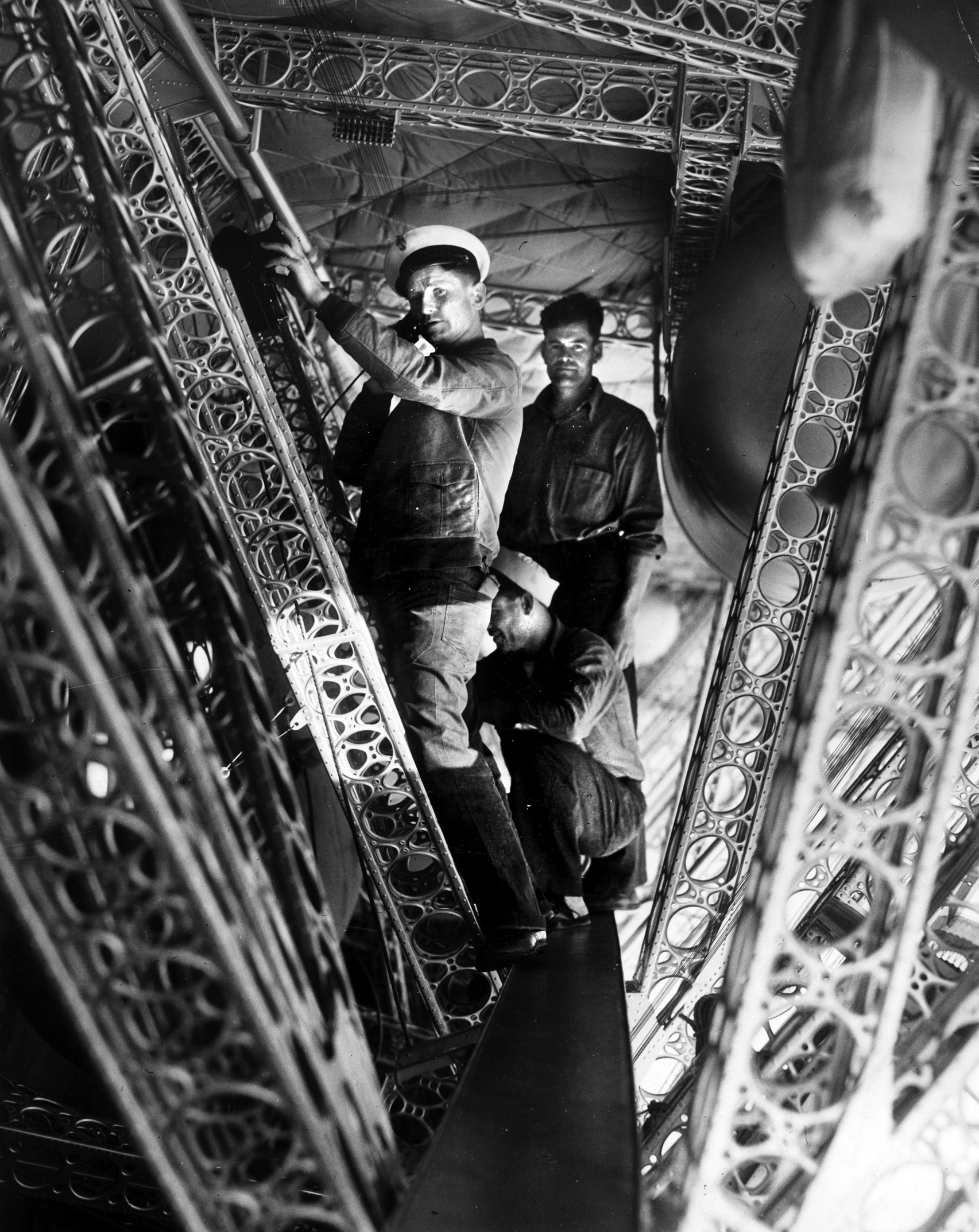
Building new facilities was another challenge, of course. There were pre-existing bases that could be put to effective use. The naval air station at Lakehurst was the most famous, largely because it was the site of the Hindenburg disaster in 1937. But the west coast also had to be seriously considered. Japanese submarines may not have had the fame or notoriety of the U-boats, but they were uncommonly active in the early months of the war.
In the aftermath of the Macon crash, the Naval Air Station, Sunnyvale, was handed over to the U.S. Army. The Sunnyvale facility was located in the San Francisco Bay area, a very strategic area for any of the armed forces. The army was reluctant to give it back to the navy, but pressure from President Franklin Roosevelt forced them to yield. In early 1942, the Sunnyvale base was reclaimed and dubbed the Naval Air Station Moffett Field.
New facilities included lighter-than-air stations at South Weymouth, Massachusetts; Weeksville, North Carolina; Glynco, Georgia; Richmond, Florida; Houma, Louisiana; Hitchcock, Texas; Santa Ana, California; and Tillamook, Oregon. The K-type was the mainstay of the Navy’s airship fleet, and they were usually deployed six to 12 ships in a squadron.
The ZNP-K type was a nonrigid whose lifting gas, as noted, was helium. The bulbous “bag” so distinctive in all airships contained three compartments. The main compartment stored the helium but was supplemented by two smaller compartments called ballonets.
The ballonets were filled with air, which was used to trim the ship, keeping its aerodynamic equilibrium. If, for example, air was pumped from the forward ballonet to the aft ballonet, it would force helium to the front of the bag, causing the ship’s nose to go up. Thus, the air in the ballonets was a kind of ballast. The helium and air movements were controlled by cables on the flight station overhead control panel.
The outer skin or envelope of three-ply rubberized cotton formed an egg-shaped bag that was 253 feet long and contained over 400,000 cubic feet of helium and air. The control car, sometimes called a gondola, was where the crew worked and lived. It was made out of chromium-molybdenum tubing covered with sheet aluminum.
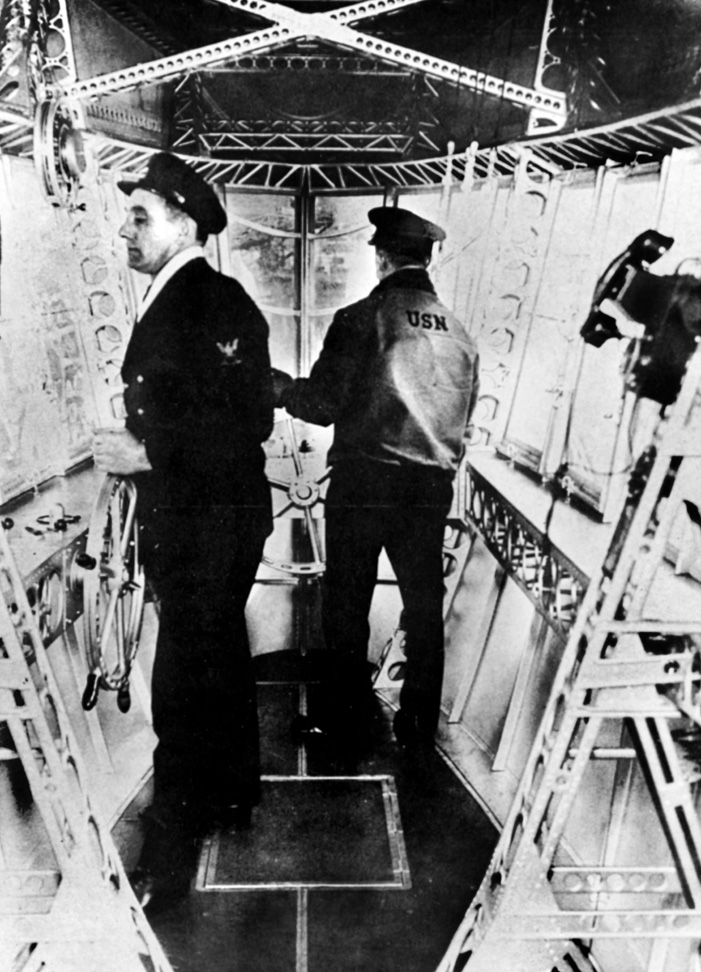
Armaments were important, but the use of them was secondary to the K-type’s overall mission. Ideally, they were supposed to detect enemy subs, but once found, they were to relay the information to “regular” aircraft or available surface vessels like destroyers. Nevertheless, a “K” came equipped with a .50-cal. machine gun in the forward turret and a .30-cal. machine gun aft. The “K” also carried four depth-charge bombs: two Mark 17s in a floor bomb bay and two Mark 24’s in two outboard racks.
Arch H. McCleskey, Jr., was an airship radar man who left a colorful memoir that provides information on what it was like to serve aboard a K-type in the war years. Most of the time, he was assigned to the base ZP-21 at Richmond, Florida, a station not far from Miami. Though U-boat activity in the North Atlantic got the public’s attention, the South Atlantic and Caribbean also grew to be hot spots for German submarines.
The most important equipment aboard were the tools used for locating enemy submarines. In the early part of the war, what was kiddingly called the “Mark-1 eyeball” was the primary method of submarine detection. That meant visual scans of the ocean, straining to see the small periscope “pole” jutting out of the water and forming a small wake, or the choppy, white-flecked waters that indicated a sub had just dived. If you were lucky, you might see a conning tower or maybe the whole submarine on the surface.
But gradually, more modern, sophisticated methods were employed. Radar was important, but there were also other tools. MAD (Magnetic Anomaly Detection) was a system that could detect submarines under water. It revealed minute changes in the earth’s magnetic field due to the magnetic field of another object, like a submerged submarine. The field-sensing detector was located at the end of the airship helium bag, far away from the metal of the gondola/control car.
An old adage says war is “long periods of boredom punctuated by moments of sheer terror.” K-class duty was long and sometimes tedious. A short flight could be 10 hours, and flights of 17 or more hours could be almost routine. With such long stretches of time involved, it’s natural to wonder what the living conditions were like aboard a K-type airship.
The short answer is spartan, but tolerable. There was a small galley that had some kind of a hot plate that could heat food, and a place where coffee could be brewed. You might have eggs, or some meat cold cuts. The heating elements were unreliable and sometimes didn’t deliver on the warm food the airmen hoped and almost prayed for. Nevertheless, most airship men took it in stride. McCleskey recalled with genuine appreciation a Christmas day patrol that featured turkey on the menu. The turkey was cold, but holiday food is holiday food!
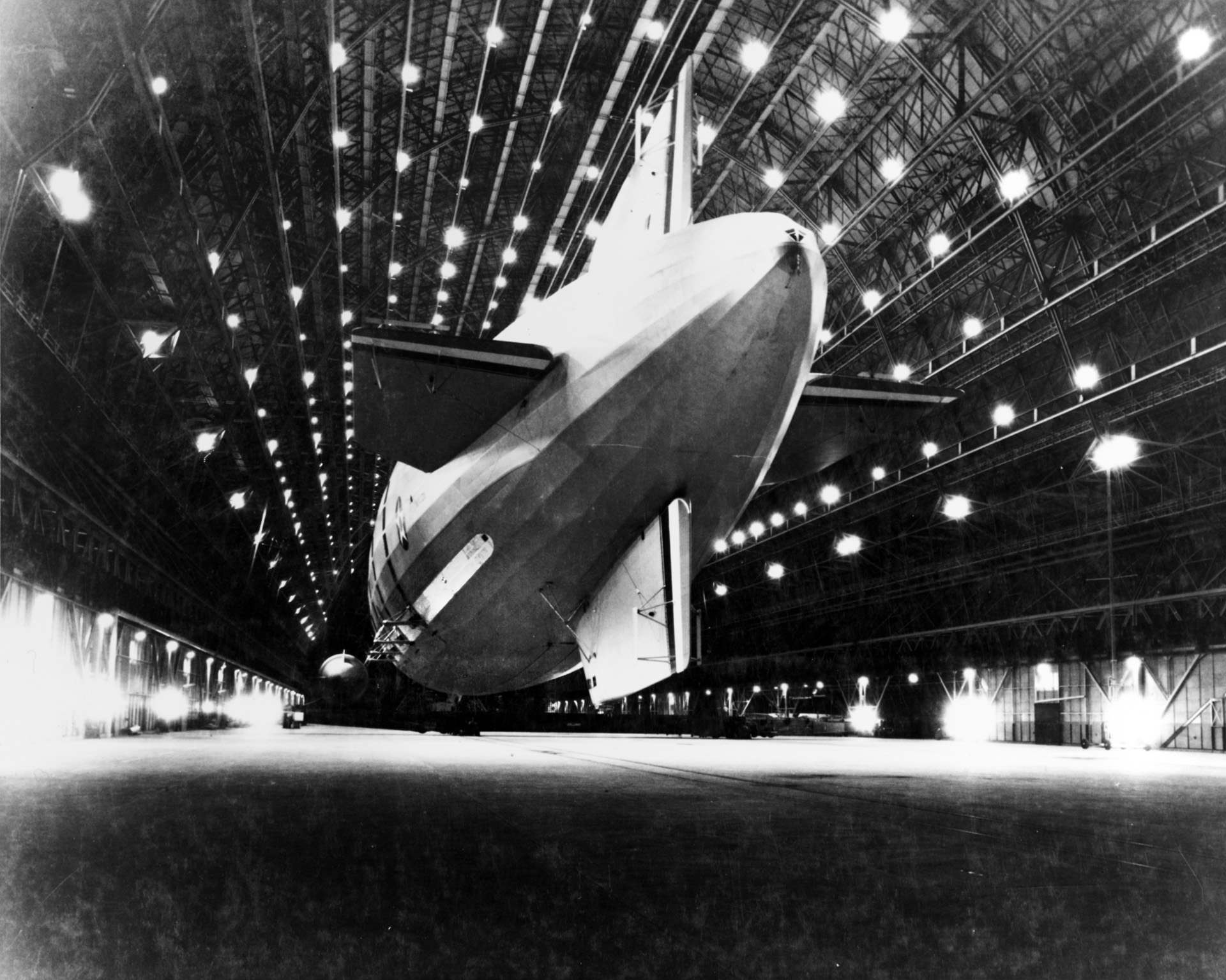
There was also a “can” (toilet) on board, rudimentary but serviceable, and a separate contraption for urination. The device was simple: a hose about three feet long and attached to a funnel When in use, the hose end was pointed over the side of the gondola and into the ocean.
Communications were established with both a high frequency (HF) and a VHF radio. The radio wire was on a reel and was extended and retracted manually. Signals, of course, were in code. Though the K-type featured some of the best and most technologically advanced equipment of the time, many ships also carried homing pigeons. These birds, decidedly low-tech but generally reliable, were used if radio silence was required, or some kind of radio malfunction occurred.
Routine flight came in several categories. Convoy duty had the best chance, at least on paper, of detecting an enemy submarine. The airship blimps, often more than one, would zigzag back and forth in the path just ahead of the cargo-laden freighters, making sure there were no lurking U- boats in the area. Other missions were simply routine patrols, scanning the U.S. coastlines, and sometimes foreign coastlines like Cuba, in search of the ever-elusive quarry.
McCleskey admitted that many of these patrols were boring at times, but the Caribbean and more southern routes had compensations. In those tropic climes, beautiful young women would often sunbathe nude on rooftops or isolated areas. Low flying and slow, the K-types were perfect observation posts for such activities. Soon the blimp’s high-powered binoculars were looking at more than sub conning towers!
On paper, a K-type crew consisted of 10 men, but in reality, it usually included two extra men as well: one extra pilot and one extra crewman. Generally, there would be one- or two-hour shifts, with one shift devoted to having an off-duty rest break. There were fairly decent bunks aboard which a man would stretch out and sleep, such relative spaciousness a luxury in a cramped and utilitarian area like a control car.
Every man had his official duties, but in this service many men were qualified for and performed other tasks. McCleskey, for example, tells of one patrol where he was one hour on radar, one hour on elevator (a pilot’s job), one hour on radio (a radioman’s job), and so on throughout the flight. And yet the long hours produced a closeness and even camaraderie among officers and men that made the term “band of brothers” not a shopworn cliché but a living reality.
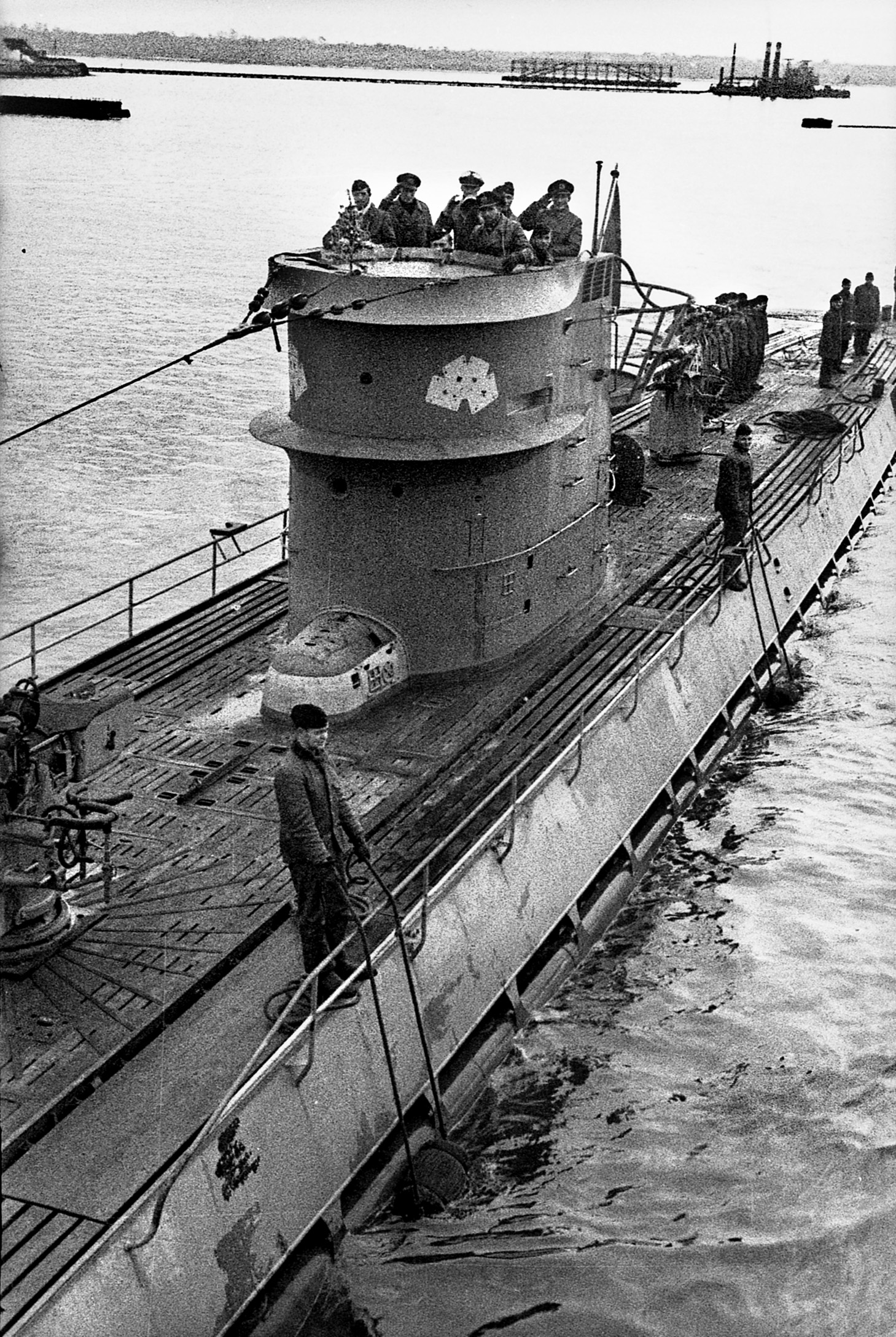
K-34 arrived and drove the U-boat away.
Some K-ships patrolled for months without ever sighting a U-boat. And yet, a routine flight could suddenly be transformed into a life-and-death struggle on the high seas. That’s what happened to the K-34 while on a routine mission escorting the S.S. Albert Gallatin. It was the late afternoon of August 28, 1943. The K-34 picked up a faint MAD reading, but there was enough doubt about it not to raise the alarm, at least not yet. It may well have been a false reading.
But after the U-107 fired its torpedoes, all doubts were quickly erased from the minds of the K-34 crew. The aft observer spotted the telltale wakes of the fired torpedoes and sounded the alarm. Pilot Ensign Jack Healy was at the controls, and once he was alerted, he swung K-34 around to follow the wakes’ trails back to the sub. Nothing could be done about the initial torpedo launches, but then fate intervened: apparently, two of the torpedoes missed, and a third hit the ship’s rudder but failed to detonate.
Ensign pilot Healy ordered two of the K-34’s depth charges to be dropped. They duly exploded at the 50-foot setting, but the U-boat was far away from its original firing position. But confusion reigned within the submarine’s crew. Kapitanleutnant Simmermacher himself had doubts. The detonations were heard, and at first everyone was elated—the ship had been hit! But then, it was realized the timing was off. What was going on here?
In the meantime, the K-34 was having problems with the befuddled crew of Albert Gallatin. The ship captain had ordered a full stop, and once the Albert Gallatin was dead in the water, a boat was launched to pick up the dead fish killed by the depth charge blast! Observing the comedy from above, the K-34 men could hardly believe their eyes. Somehow, the liberty ship crew didn’t get the original message and didn’t realize they were in grave danger. But if they were safe, then why would the airship drop depth charges? Did they think the airship was dropping the charges to provide them with a courtesy fish dinner?
Ensign Pilot Healy quickly ordered another signal sent to the ship, and this time they got the message. Once again, comedy overcame possible tragedy as the scared crew rowed back to the ship, hauled the boat in, and got underway in record time. But they were still not out of danger—the sub might follow them to finish the job.
Back aboard the U-107, the still-puzzled Simmermacher decided to go back and have a look. This decision was almost his last, because as the sub neared periscope depth it was violently rocked by two more explosions. They were the remaining two depth charges from the K-34. The U-boat skipper veered off, apparently undamaged but thankful for the escape from destruction.
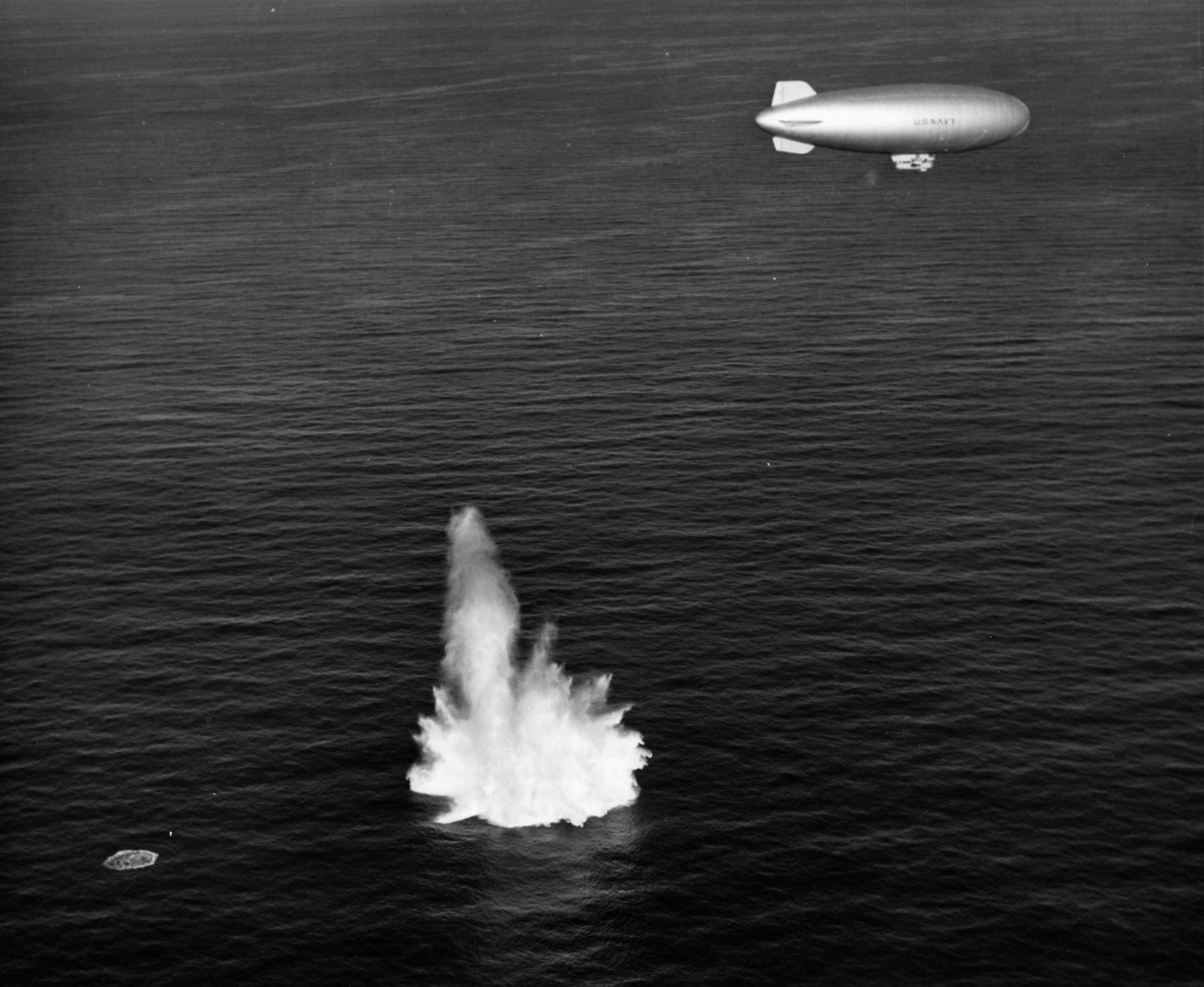
But, cheated of his prey, Simmermacher hoped to trail Albert Gallatin, catch up with her, and send her to the bottom. The U-107 waited an hour and a half, hoping that the K-34 would go back to base or otherwise disappear, but it always hovered into view. Finally, Simmermacher gave up and broke off the pursuit empty-handed.
By far the most celebrated battle between airship and submarine occurred off the Florida Keys on the night of July 18, 1943. The mission was a standard one: airship K-74 was ordered to protect a tanker and a freighter. The K-74 was commanded by pilot Lieutenant Nelson Grills, and he and his crew were genuinely surprised, even shocked, at the sudden sight of a surfaced German U-boat. Grills was cautious, and rightly so, because it was almost midnight, and in the darkness, he didn’t want to attack an Allied vessel by mistake.
It was the U-134, a 220-foot Type VIIC U-boat, and the skipper was Oberleutnant Hans-Gunther Brosin. Brosin had ordered the sub to surface to vent the carbon dioxide that inevitably built up and let in fresh air. Grateful to be released from the confines of their steel “prison,” the Kreigsmarine sailors came out on deck to enjoy a warm and delightful tropical night. This little respite was going to be brief—the oberleutnant knew there were two Allied ships in the vicinity that he intended to make short work of.
Satisfied it was a German submarine, Grills decided to attack at once. The darkness, the excitement of battle, and the relative inexperience of the K-74’s officers and men were going to have impacts on subsequent reports of the clash. Details don’t agree, though the general narrative is clear enough. Heading straight for the sub’s starboard quarter, the K-74 dived lower as the U-boat’s machine guns opened fire. The K-74 opened up with its own .50-cal. machine gun, with Aviation Machinist Mate Third Class Garnet Eckert returning fire as rapidly as the German gunners.
The chattering cacophony deafened the ears even as the tracer bullets, those long streaks of incandescent light, dazzled the eye. According to one later report, the C-74’s machine gun cleared the U-boat’s deck as German sailors scrambled for cover. The K-74 sped over the sub, and when the timing seemed right, the order was given to release the depth charges. Here is where the narrative gets murky; some later claimed that the old-design L21A bomb release was tricky and that, in part due to inexperience and lack of practice, Machinist Mate Second Class Isadore Stessel was unable to release the depth charges.
Two distinct and very loud noises were heard seconds later, and the K-74 crew seems to have felt the reports were from the U-134’s deck gun. But the official story falls apart when it is noted the U-134 probably did not have a deck gun. At least there is no solid evidence of one. Sadly, and ironically, Stessel was killed, the crew’s one fatality, so his side of the story will never be known.
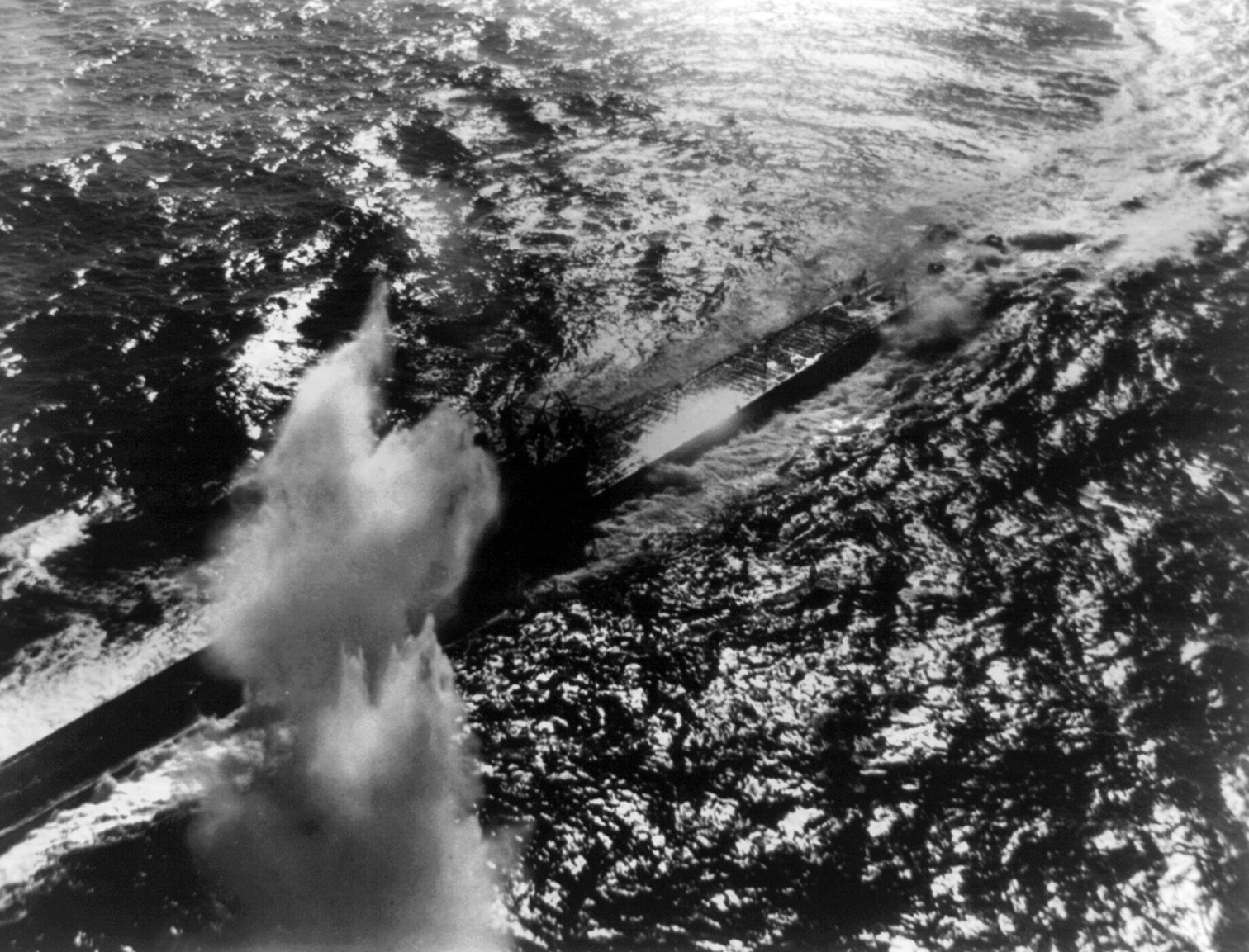
In the meantime, the K-74 had other things to worry about. The control car was being peppered with German bullets, and the starboard side had caught fire. An unnamed “mechanic,” possibly Machinist Mate Second Class Jonathan Schmidt, extinguished the fire by “leaning out the maintenance door.” Though the immediate danger was over, a new crisis had arisen: too many German bullets were puncturing the K-74’s helium and air-filled skin. The slow but unmistakable hiss of escaping gas from numerous bullet holes could be heard even amid the noise of battle.
This was serious, and not only because of the loss of altitude. As the K-74’s envelope, or bag, collapsed, the ship’s elevator and rudder cables would go slack. Any kind of control or navigation would be impossible. Ballast and fuel tanks were dropped, and air shifted into the ballonets in a desperate effort to stay aloft. The battle was now over, as the crippled and deflating K-74 drifted away from the sub and gained some altitude.
Every effort was made to lighten the ship. Lieutenant Grills hoped they could stay in the air long enough to reach Elbow Cay, the nearest speck of dry land. Alas, it was not to be. The stricken blimp descended and landed in the water stern-first. It was a little after midnight, very dark, but the evacuation of K-74 was orderly and without panic. Everyone had their “Mae West” life preservers on, but attempts to inflate and board a raft proved unsuccessful.
Pockets of helium still remained, and what was left of the K-74 did not immediately sink. Grills went back to the half-submerged control car, in large part to dump secret electronic gear and classified documents overboard. Aviation Radioman Third Class John Rice also came back to the control car. Both men showed courage in returning, because it could have sunk or the two remaining depth-charge bombs might have exploded.
Mission accomplished, the two men returned to the water, but Grills became separated from the others in the darkness. The rest of the crew clung to the wreckage and were discovered by a J4F-2 Wigeon seaplane the next day. Grills also was picked up, but tragically one man, Stessel, was killed by sharks.
The U-134 reported that it had been attacked by an American airship and further noted it has sustained damage that was not related to any machine-gun bullet hits. According to some reports, the damage was great enough for the sub to be unable to dive. If that is so, it was made particularly vulnerable to surface attack, a “sitting duck” to any Allied ship or aircraft that spotted it.
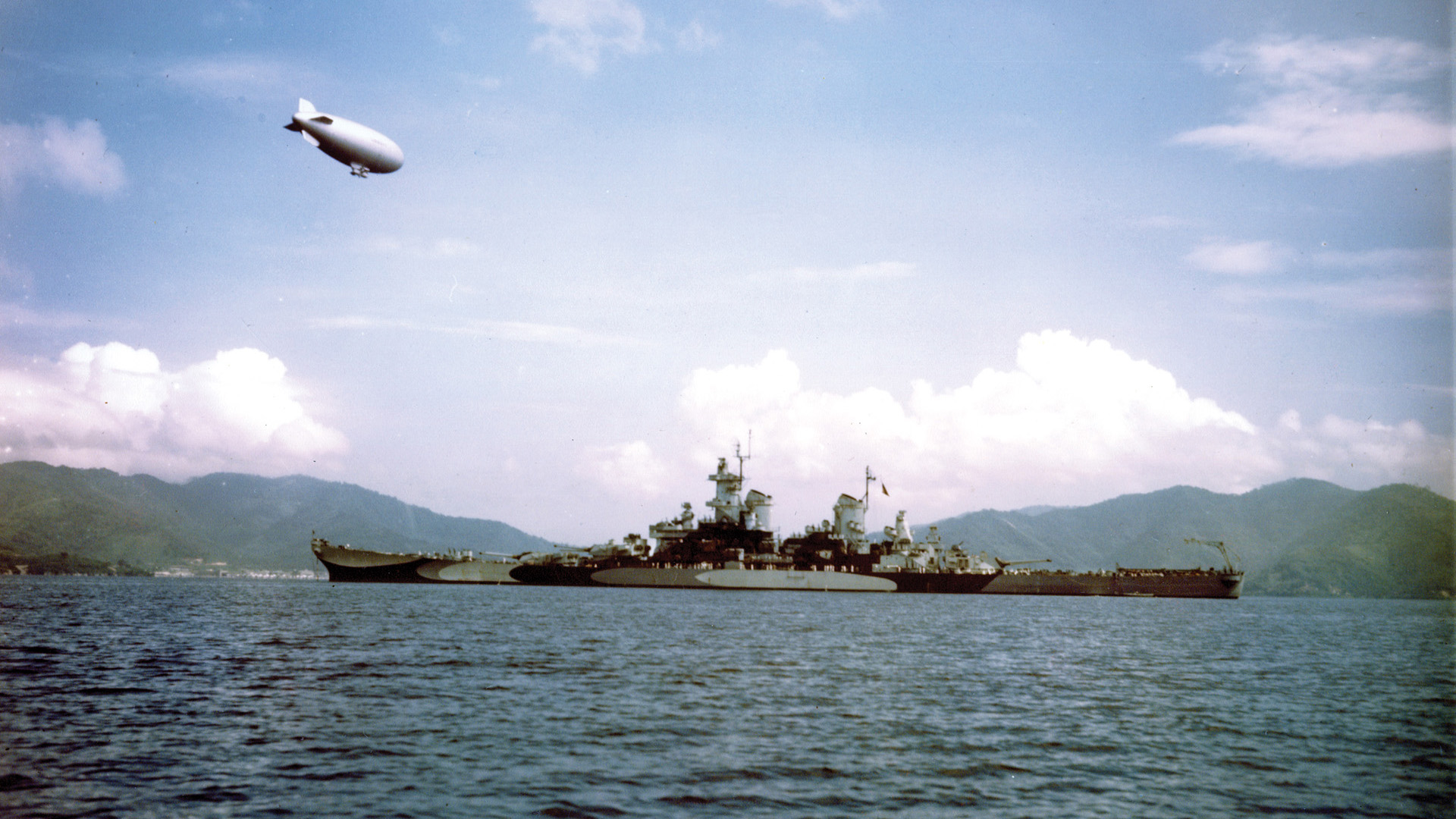
Sure enough, the U-134 was spotted and sunk by a British patrol plane about a month later. An RAF Wellington bomber from No. 179 Squadron made short work of the sub; the entire complement of 48 men perished. But there seems to be little doubt now that the K-74 deserves at least partial credit for the “kill.”
Initially, the Navy brass did not like Grill’s decision to attack, and a court martial was seriously discussed. Unless the circumstances absolutely warranted it, airships were not to directly engage enemy submarines. Their duty was to seek, to locate, and let others do the job of sinking the quarry. Nevertheless, the “brass” relented, no trial was held, and years later Grill was awarded the Navy Cross for his heroic attack. The K-74 crew also received Commendation medals at the same time.
When the war ended in September 1945, there were at least 15 blimp squadrons in existence, patrolling about three million square miles of water. These LTA squadrons, whose equipment was mainly the K-type airship, performed 35,000 operational flights in the Atlantic and 20,300 flights in the Pacific. These statistics are impressive enough, but it’s their contribution to the war effort that underscores their overall importance.
The airships accumulated more than 5.5 million hours in the air, escorting nearly 90,000 ships loaded with cargo, troops, weapons, and supplies to far-flung battlefronts. It was their proud boast that no ship was ever lost under their protection. That’s an outstanding record, but the full story of their successes in hunting, spotting, fighting and sometimes even sinking and destroying enemy submarines perhaps has yet to be told.
Author Eric Niderost is a frequent contributor to WWII History on a variety of topics. He resides in Union City, California, where he is also a college history professor.
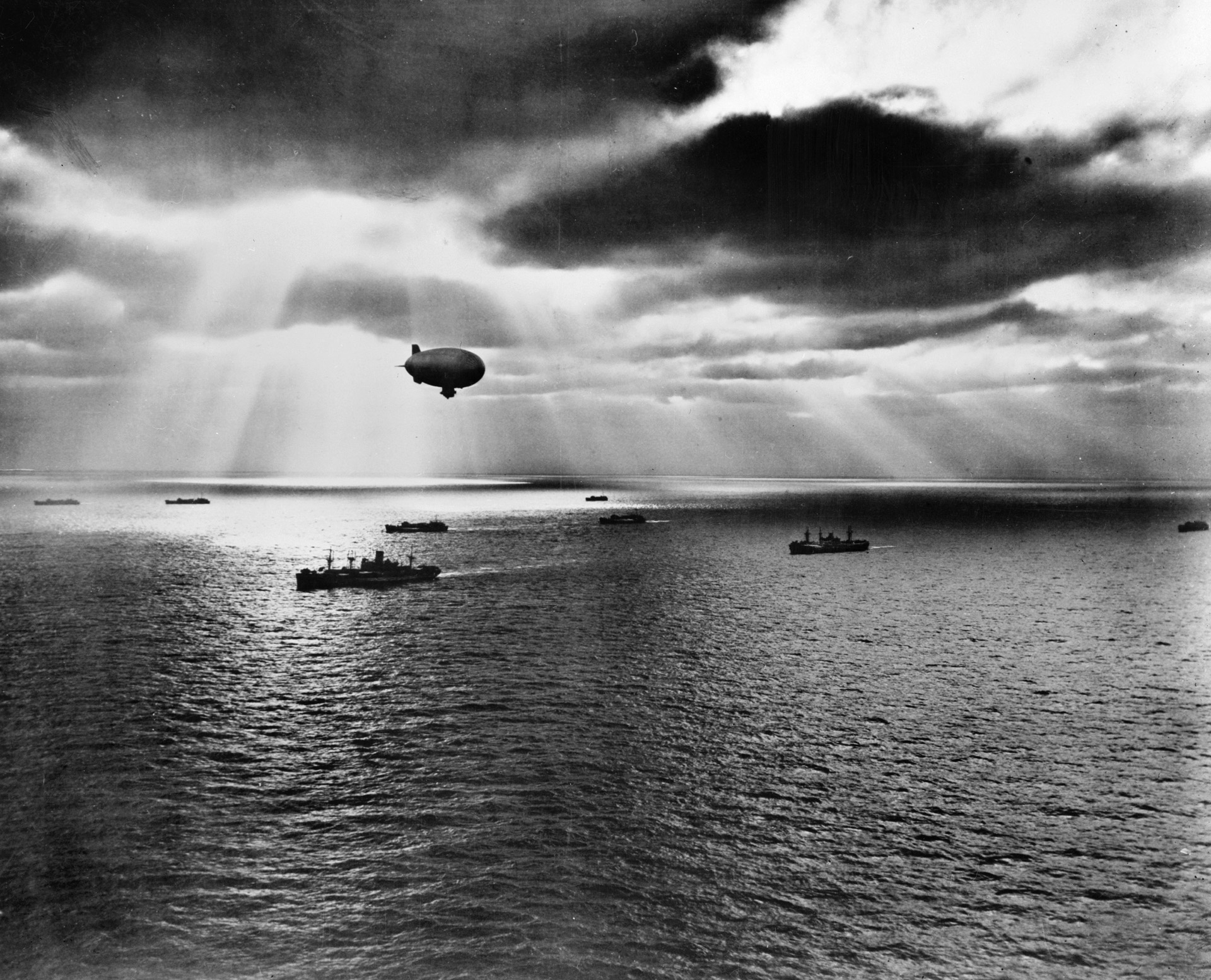
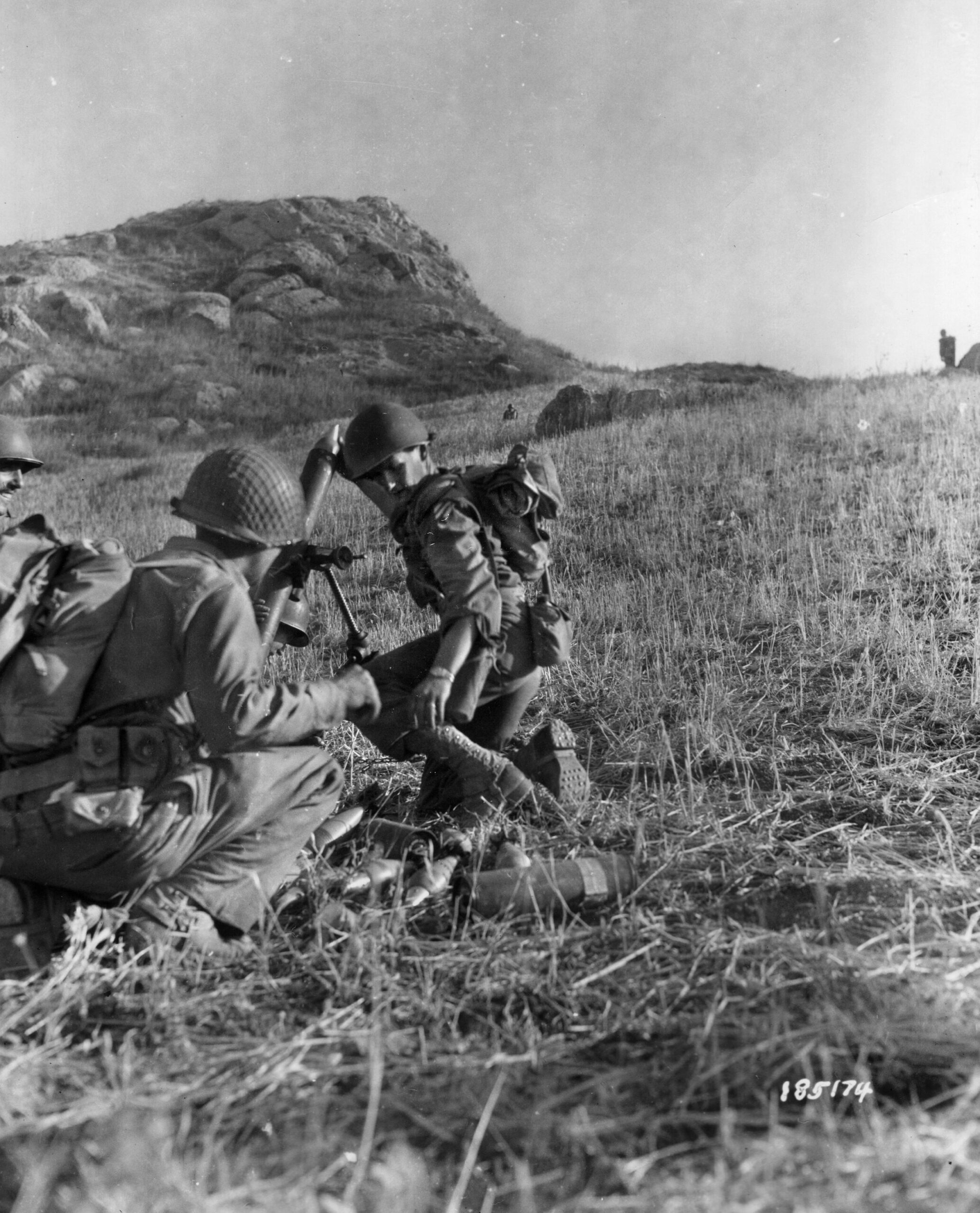
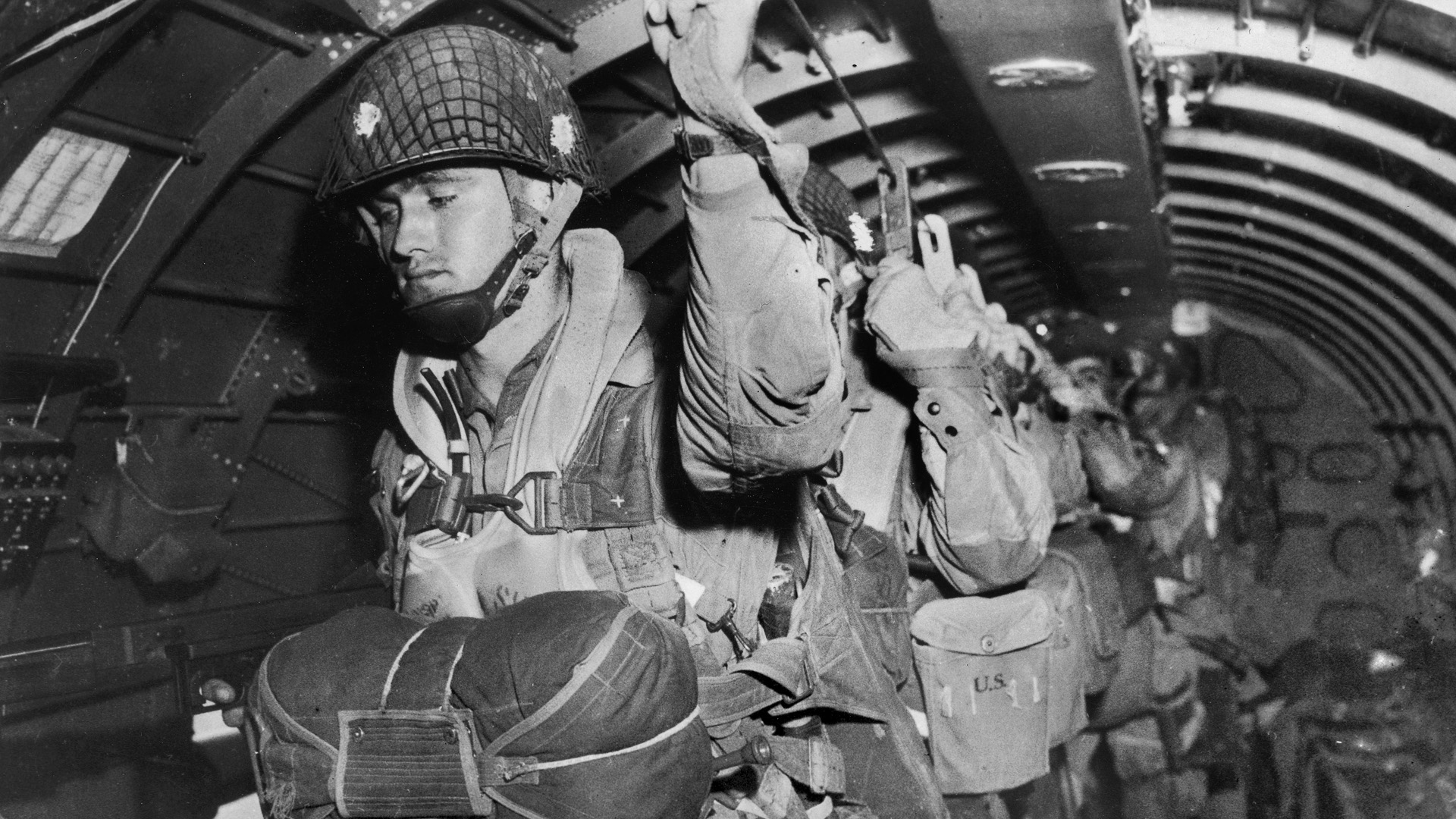
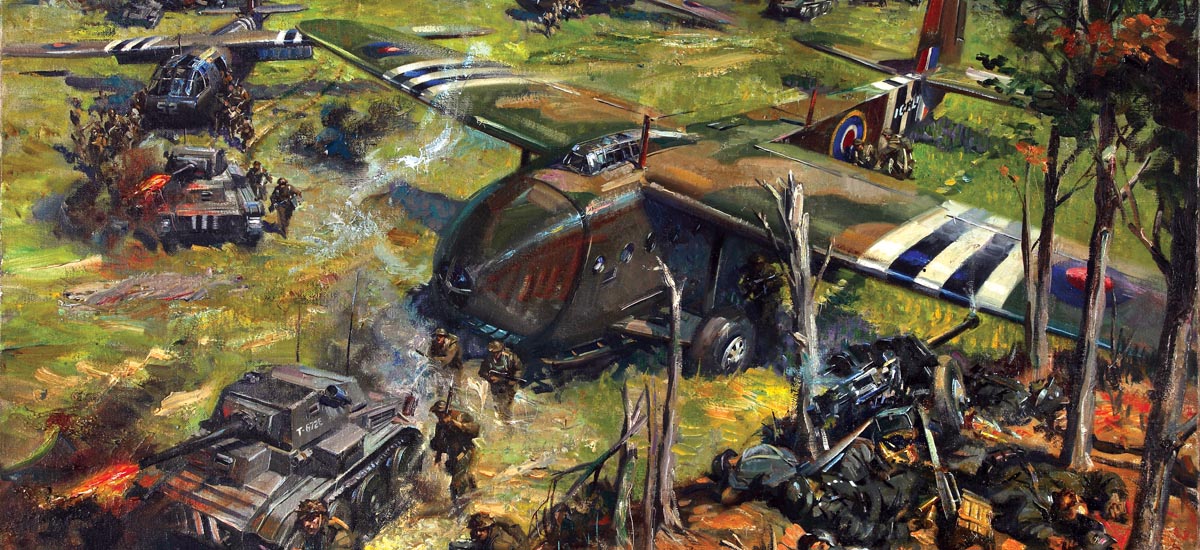

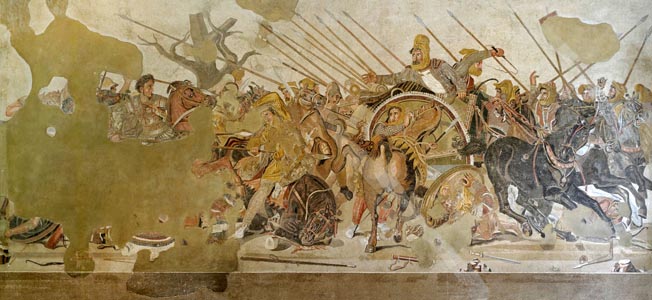
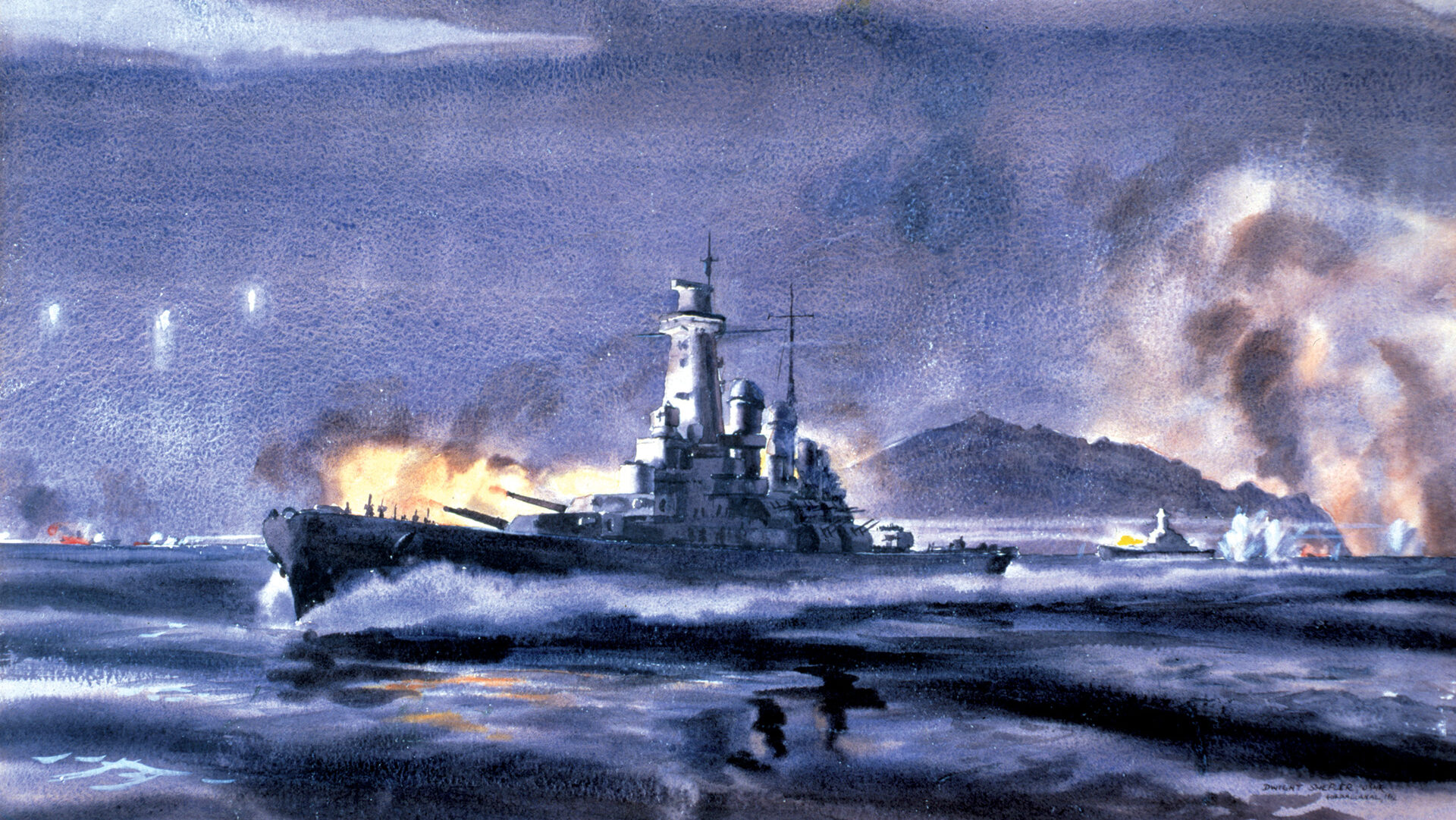
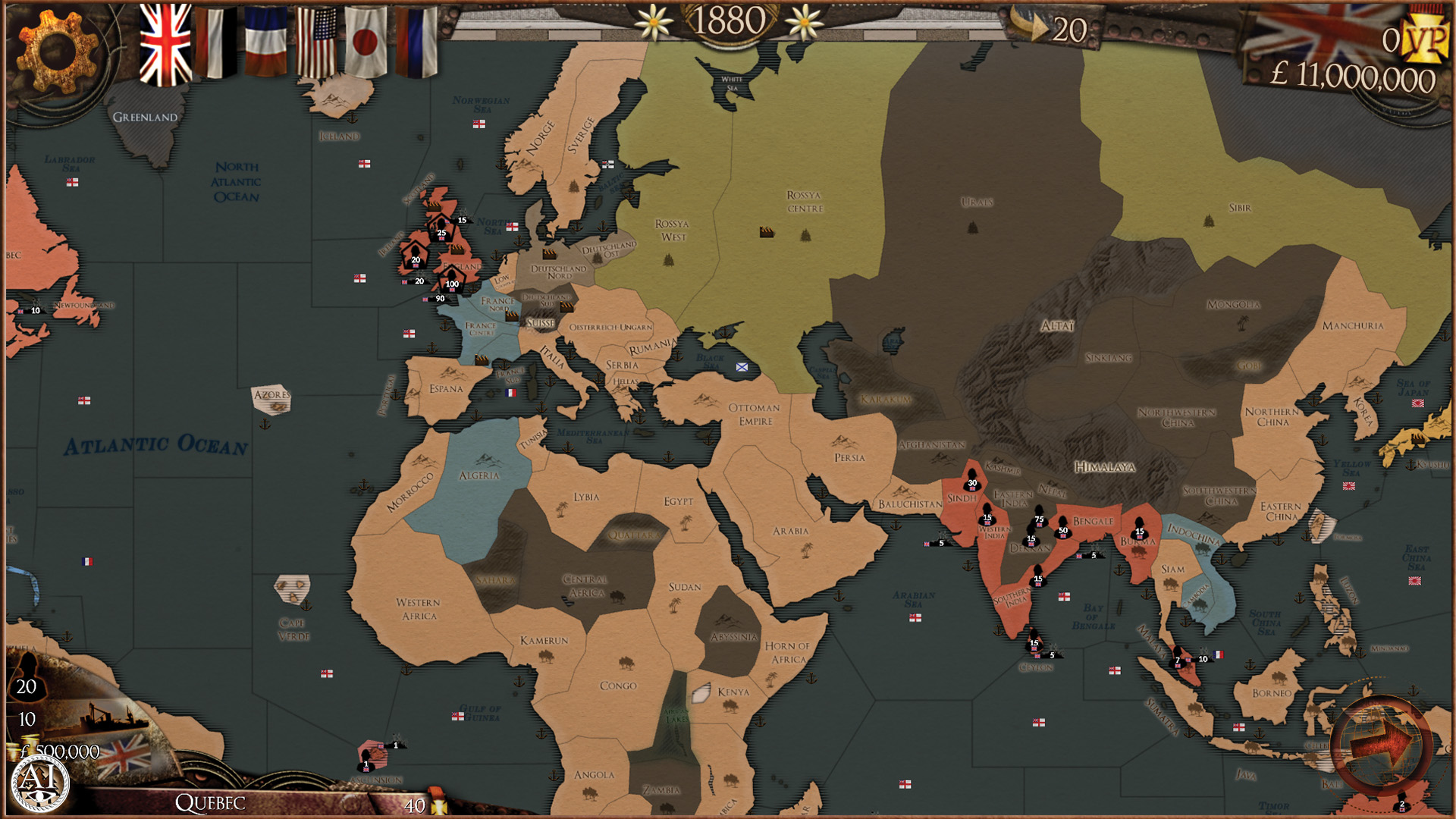
Join The Conversation
Comments
View All Comments